By jibing (or as you say in Britain: gybing) the stern moves through the wind from broad reach to broad reach. It is the second way of changing tack. Equally by doing this, we reach a destination that is leeward on the other side of the wind, but we can also head up after jibing. Up until now we have used the Quick-turn to do this.
But what makes jibing difficult or why do we have to do it in a special way? Why is it not a good idea to bear away and rotate the stern through the wind uncontrolled? Actually it should be easier than tacking because there is no area where sailing is impossible and we cannot get stuck into irons.
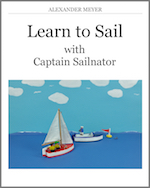 This online sailing course has also been published as ebook and paperback. For more information click here!
This online sailing course has also been published as ebook and paperback. For more information click here!
You can download the Ebook for example at:
iTunes UK & iTunes US | iBooks for iPad and Mac
Amazon.com & Amazon.co.uk | Kindle-Edition
Google Play | for Android
The paperback is available for example at:
Amazon.com | Amazon.co.uk
The problem is that the wind comes straight from behind. The sails are wide open when sailing broad reach. When sailing downwind the sails are even eased as wide as possible. If we bear away now the wind comes from the other side at one point and blows into the mainsail from there. This means that the boom swings from one side to the other, in the biggest angle possible. If this happens unintentionally and uncontrolled we talk about an accidental jibe.
The boom swings unexpected with enormous power from one side to the other. With a bit of luck nobody has his head in between. The boom smashes into the leeward shroud and might damage the rig or dismast the boat. A dinghy might capsize by the stroke.
So we have to do something to ensure that the boom does not come all the way from one side to the other without control. We haul it to the middle in the right moment and let it go only half the way. Then we stop it with the mainsheet before it hits the shroud.
But how do we find the right point? As I said in the beginning we jibe from broad reach to broad reach on the other side of the wind. So we have to get there first. Imagine we are sailing beam reach. So what do we have to do to get to broad reach… ? Right, we have to bear away. The command is: “Ease sheets on broad reach!” and we pull the tiller towards us. At one point the boat stops heeling and the crew can take a place in the middle of the boat. How far do we bear away … ? Right, till the jib collapses. Then we head up till the jib fills again. Now we have found the course broad reach from where we can start jibing.
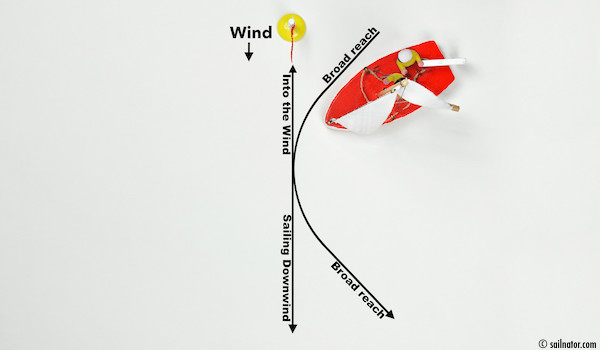
Figure 90: The helmsman bears away carefully.
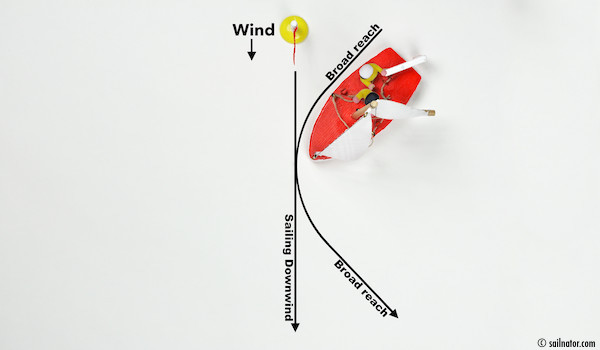
Figure 91: At the same time he eases the sheets!
But how do we go on from here? We want to move the stern through the wind so we go on bearing away. (Figure 91) When we see that the jib starts to collapse (Figure 92) we push the tiller to the middle. (Figure 93) Now it is very important to keep on this course. We sail exactly straightforward. Even if we ourselves have to move now and risk pulling the tiller.
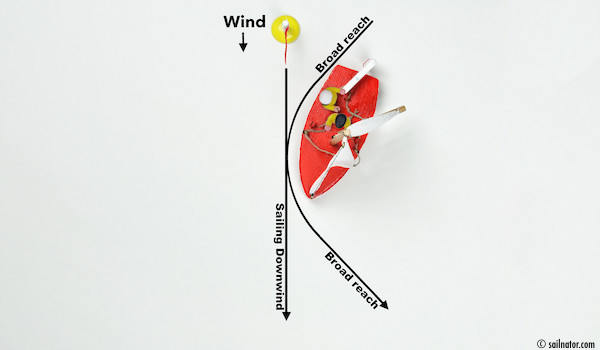
Figure 92: The jib collapses!
Once again: If the jib is at the border between collapsing and filling we put the tiller in the middle of the boat. We get up and take the tiller between our legs. It has to be in the same position as it was when we held it by hand. We just check if the jib is still how we wanted to have it. If not we correct the course the way it should be. All the time we are prepared to duck in case we accidentally move the tiller and the boom comes over.
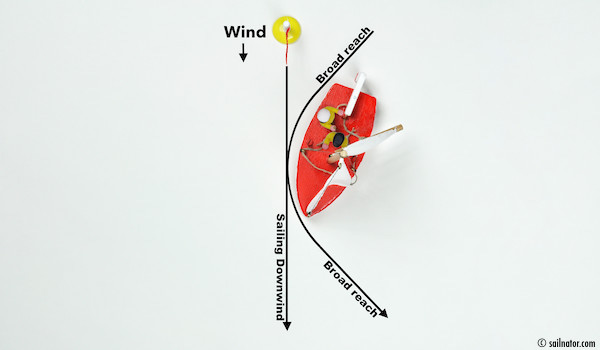
Figure 93: Now the helmsman moves the tiller to the middle and keeps on course! He calls: “Ready to jibe?”
So we sail slightly bent forward and hold the tiller between our legs. We are between broad reach and sailing downwind and now we haul the mainsheet as far as possible. (Figure 94) We do not do it in little steps. Rather, we pull the mainsheet with two or three strong pulls as close as possible from the block on the floor of the cockpit. This way the mainsheet should be hauled in two or three pulls.
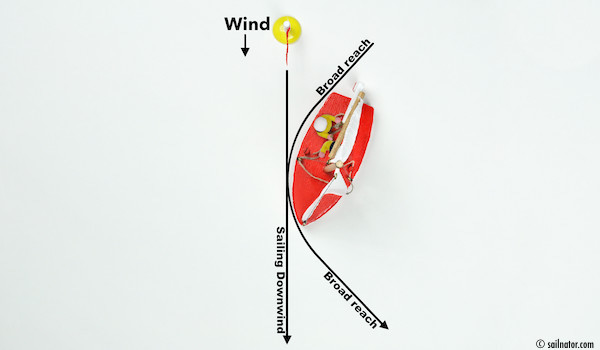
Bild 94: The helmsman hauls the mainsail as close as possible.
At the same time we take care that we do not make a steering mistake. We still have to keep on course. In one hand we hold the hauled mainsheet and with the other we now take the tiller again. We duck through under the boom and sit down on the side the mainsail was before. We do that by lifting the leg that is on the side we were sitting before over the tiller.
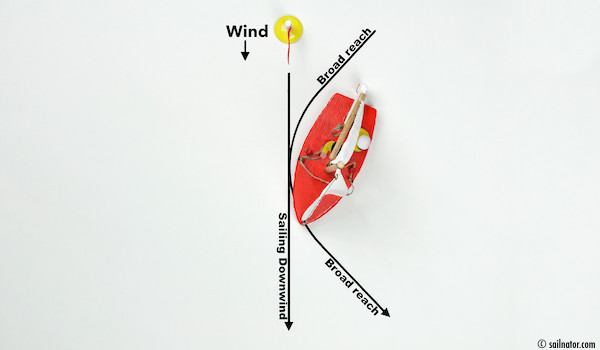
Figure 95: The helmsman takes his place on the other side!
We are still sailing the same course but we want to bear away now to move the stern through the wind. When we sit windward the sail we had to pull the tiller to bear away. But now we have changed sides and have to push it. (Figure 96)
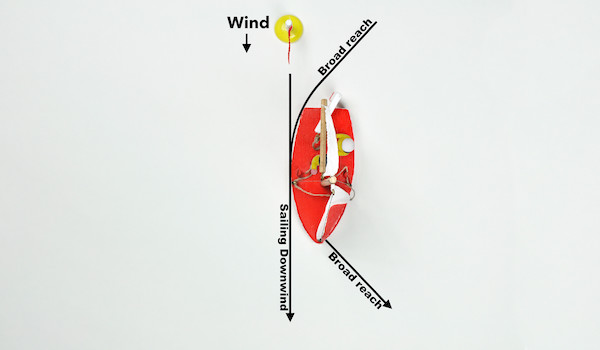
Figure 96: The helmsman pushes the tiller away. He commands: „Jibing!“ (or “Jibe-ho!”)
The mainsail is still hauled as close as possible and we hold the mainsheet with our hand. But it must never be wrapped around the hand, because we push the tiller now and at some point the sail gets wind from the other side.
We feel pressure on the mainsheet and release it through our open hand immediately. If the mainsheet would have been wrapped around the hand or if we had kept hold it a dinghy would probably capsize. Just shortly before the boom reaches the leeward shroud we grab the mainsheet again and stop it from swinging further. (It is the best to wear special gloves for sailing.) Through this strong lurch there is the danger is to capsize or to jibe back again. To prevent that we have to pull the tiller forcefully but shortly once and push it back to the middle immediately.
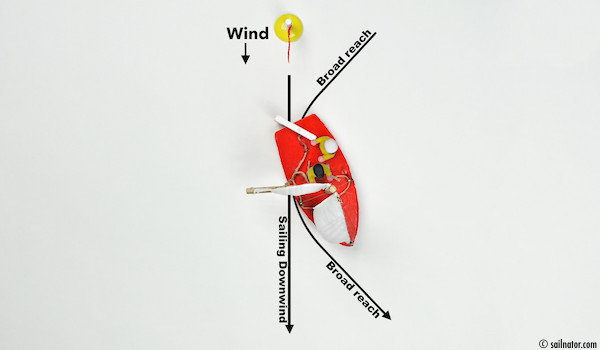
Figure 97: „Release mainsheet!” The helmsman makes sure the mainsail just before it hits the shroud. He shortly pulls the tiller once to prevent capsizing or jibing back again.
The crew pulls the jib to the other side now and the sheets can be hauled. Then we head up to course beam reach. (Figure 98)
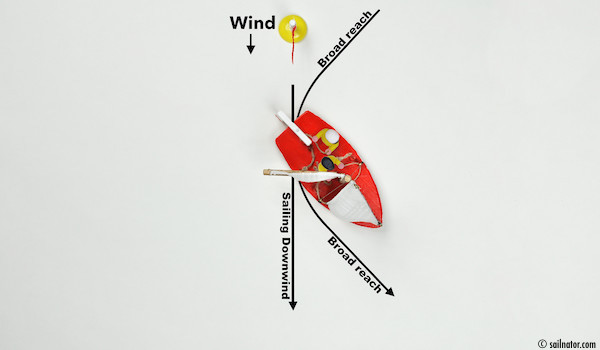
Figure 98: The crew pulls the jib to the other side and the helmsman commands: “Haul sheets on broad reach!”
We can remember the sequence of jibing as follows: The jib collapses, tiller between the legs! Haul mainsheet, change sides, push tiller, ease mainsheet and stop it just before the shrouds, pull tiller once forcefully, push tiller and head up to broad reach. It might not be possible to stand up and take the tiller between the legs in every dinghy. Before you sail an unknown boat ask how jibing is best done.
Watch my stop motion video about jibing with Jenny and Tom →
The commands for jibing are:
“Ready to jibe!” “Ready!”
“Ease sheets!” (To get on a course between broad reach and sailing downwind!)
“Haul mainsheet!” (Only necessary if the helmsman does not operate the mainsheet himself)
“Jibing!” (Or the traditional way: “Jibe-ho!”)
(That is the sign that the stern now moves through the wind)
“Release mainsheet!”
“Haul sheets to broad reach!”
We have now learned how to move the stern through the wind. Now we are able to sail a triangle without the Quick-turn and are ready to join a regatta. (Sailing-race)
← Last chapter | Next chapter →
All chapters: Technical Terms | The theory behind sailing |Close-hauled | Beam reach | Broad reach | Sailing downwind | Tacking | Beating | Quick-turn | Sailing up head to wind | Man overboard | Jibing | Heaving-to | Leaving the dock | Berthing | Rules of the road 1 | Rules of the road 2 | Rules of the road 3 | Reefing | Capsizing